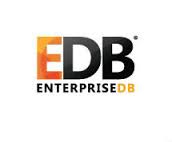 Beth Israel Deaconess Medical Center (BIDMC) has a long tradition of testing speculative technologies with the notion that breakthroughs often require tolerance for failure. For example, we’ve embraced blockchain in healthcare because we believe public ledgers have promise to unify medical records across institutions. Over the past few months, we’ve developed healthcare applications for Alexa, Amazon’s ambient listening device that combines natural language processing and easy to use application program interfaces. We have also tried Google Home. Here’s our experience thus far...
Beth Israel Deaconess Medical Center (BIDMC) has a long tradition of testing speculative technologies with the notion that breakthroughs often require tolerance for failure. For example, we’ve embraced blockchain in healthcare because we believe public ledgers have promise to unify medical records across institutions. Over the past few months, we’ve developed healthcare applications for Alexa, Amazon’s ambient listening device that combines natural language processing and easy to use application program interfaces. We have also tried Google Home. Here’s our experience thus far...
Application Programming Interfaces (APIs)
See the following -
Ebola Cases Put Focus On Health IT Needs
The Ebola cases in the United States, despite their limited numbers, have generated considerable discussion and anxiety. The discussion has included health IT because of the initial assertion that the Dallas hospital electronic health record led to the first U.S. Ebola case being sent home...
- Login to post comments
EdLogics Addresses Health Literacy Gap with Linux Container and Cloud Solutions from Red Hat
 Red Hat, Inc., the world's leading provider of open source solutions, today announced that EdLogics, a health education-based consumer engagement company and innovator in game-based learning, has built its digital health literacy platform on container and cloud solutions from Red Hat, including Red Hat OpenShift Container Platform, Red Hat JBoss Middleware, and Ansible by Red Hat. EdLogics’ Education-as-a-Service offering, based on Red Hat technology, is aiming to transform the way consumers learn about health and improve health literacy while simultaneously cutting consumer costs...
Red Hat, Inc., the world's leading provider of open source solutions, today announced that EdLogics, a health education-based consumer engagement company and innovator in game-based learning, has built its digital health literacy platform on container and cloud solutions from Red Hat, including Red Hat OpenShift Container Platform, Red Hat JBoss Middleware, and Ansible by Red Hat. EdLogics’ Education-as-a-Service offering, based on Red Hat technology, is aiming to transform the way consumers learn about health and improve health literacy while simultaneously cutting consumer costs...
- Login to post comments
EHRs, IoT, Revenue Cycle Bring Opportunities for Healthcare APIs
 Application programming interfaces (APIs) are quickly becoming a critical tool for healthcare organizations looking to build interoperable connections, and it is likely that this new standard for health data exchange will keep growing in importance during the next few years. A new report from Market Research Engine (MRE) predicts healthy growth for the nascent healthcare API ecosystem, forecasting a 4 percent compound annual growth rate (CAGR) that will produce a $234 million market by 2024....
Application programming interfaces (APIs) are quickly becoming a critical tool for healthcare organizations looking to build interoperable connections, and it is likely that this new standard for health data exchange will keep growing in importance during the next few years. A new report from Market Research Engine (MRE) predicts healthy growth for the nascent healthcare API ecosystem, forecasting a 4 percent compound annual growth rate (CAGR) that will produce a $234 million market by 2024....
- Login to post comments
EnterpriseDB – On The Road to Federated, Collaborating Databases
 EnterpriseDB’s new Advanced Server 9.5 may be ‘just another upgrade’, but it also points to a way of building collaborative database management environments that map into the wider world of collaborating applications and services...[it] includes some new tooling that points in an interesting direction – the ability for users to build federated databases, bringing together different databases from different vendors into collaborative collectives that can serve the needs of the bigger, more comprehensive business services that are now starting to appear.
EnterpriseDB’s new Advanced Server 9.5 may be ‘just another upgrade’, but it also points to a way of building collaborative database management environments that map into the wider world of collaborating applications and services...[it] includes some new tooling that points in an interesting direction – the ability for users to build federated databases, bringing together different databases from different vendors into collaborative collectives that can serve the needs of the bigger, more comprehensive business services that are now starting to appear.
- Login to post comments
Epic and Other EHR Vendors Caught in Dilemmas by APIs (Part 1 of 2)
The HITECH act of 2009 (part of the American Recovery and Reinvestment Act) gave an unprecedented boost to an obscure corner of the IT industry that produced electronic health records. For the next eight years they were given the opportunity to bring health care into the 21st century and implement common-sense reforms in data sharing and analytics. They largely squandered this opportunity, amassing hundreds of millions of dollars while watching health care costs ascend into the stratosphere, and preening themselves over modest improvements in their poorly functioning systems...
- Login to post comments
Epic and Other EHR Vendors Caught in Dilemmas by APIs (Part 2 of 2)
The first section of this article reported some news about Epic’s Orchard, a new attempt to provide an “app store” for health care. In this section we look over the role of APIs as seen by EHR vendors such as Epic. Dr. Travis Good, with whom I spoke for this article, pointed out that EHRs glom together two distinct functions: a canonical, trusted store for patient data and an interface that becomes a key part of the clinician workflow. They are being challenged in both these areas, for different reasons...
- Login to post comments
Europeana adds 470,000 images to Creative Commons Search
 CC Search beta has added 470,000 images from the millions of materials contained in Europeana’s collection of Creative Commons images. Europeana is Europe’s digital platform for cultural heritage, collecting and providing online access to over 54 million of digitised items ranging from books, photos, and paintings to television broadcasts and 3D objects. As an important cultural partner to CC, Europeana’s platform strengthens the commons through its large, searchable collection of digital records from nearly 4,000 European libraries, archives, museums and audiovisual galleries...
CC Search beta has added 470,000 images from the millions of materials contained in Europeana’s collection of Creative Commons images. Europeana is Europe’s digital platform for cultural heritage, collecting and providing online access to over 54 million of digitised items ranging from books, photos, and paintings to television broadcasts and 3D objects. As an important cultural partner to CC, Europeana’s platform strengthens the commons through its large, searchable collection of digital records from nearly 4,000 European libraries, archives, museums and audiovisual galleries...
- Login to post comments
FHIR And The Future Of Interoperability
There is growing interest in the health care information technology community in an emerging data exchange technology known as FHIR (pronounced “fire”)...
- Login to post comments
Fixing The Background Technologies On Which Health Apps Depend
Developers are flocking to health IT with the laudable goals of making a difference in people’s health (and earning some money in the process). The complex and balkanized field presents numerous barriers to entrepreneurs breaking into the space...
- Login to post comments
GSA Unveils Data Federation Portal
A day after the White House convened an Open Data Innovation Summit to discuss its work to structure and share government data, the GSA unveiled a new effort to highlight emerging data standards and API initiatives across federal, state and local government. The Open Data Summit on Sept. 28, co-hosted by White House, the Small Business Administration, the General Services Administration and the industry-backed Data Foundation, showcased cutting-edge uses of open data driving government efficiency, innovation and economic opportunity for the public...
- Login to post comments
Halamka on MU3 Regs: The Good, The Bad, and the Ugly
 On Friday March 20, CMS released the Electronic Health Record Incentive Program-Stage 3 and ONC released the 2015 Edition Health Information Technology (Health IT) Certification Criteria, 2015 Edition Base Electronic Health Record (EHR) Definition, and ONC Health IT Certification Program Modifications. Perhaps the most important statement in the entire 700+ pages is the following from the CMS rule: "Stage 3 of meaningful use is expected to be the final stage and would incorporate portions of the prior stages into its requirements."
On Friday March 20, CMS released the Electronic Health Record Incentive Program-Stage 3 and ONC released the 2015 Edition Health Information Technology (Health IT) Certification Criteria, 2015 Edition Base Electronic Health Record (EHR) Definition, and ONC Health IT Certification Program Modifications. Perhaps the most important statement in the entire 700+ pages is the following from the CMS rule: "Stage 3 of meaningful use is expected to be the final stage and would incorporate portions of the prior stages into its requirements."
- Login to post comments
Halamka on the JASON Report
On 4/09/2014, AHRQ released the JASON report, facilitated by Mitre. JASON is an independent group of scientists who advise the United States government on matters of science and technology. The intent of the report is to make recommendations for a new healthcare IT architecture to accelerate interoperability. Read More »
- Login to post comments
Halamka Recounts Early Experiences with Ambient Listening Devices (Alexa and Google Home)
- Login to post comments
Halamka Sets Healthcare Innovation Priorities for 2017
 As we begin 2017, what should be the focus of our work over the next year?... Regardless of the policies, repeals, and delays of the Trump administration, we’ll still need to optimize usability and support the four goals of value-based purchasing - quality measurement, total medical expense management, practice process improvement and technology adoption. BIDMC has already created a prototype of groupware documentation and we should complete our next generation inpatient documentation solution by mid 2017. Part of that work incorporates open source secure texting as part of the medical record. We’re also piloting Google’s G-suite so that our stakeholders can store/share, collaborate, and communicate on any device from anywhere using only a browser...
As we begin 2017, what should be the focus of our work over the next year?... Regardless of the policies, repeals, and delays of the Trump administration, we’ll still need to optimize usability and support the four goals of value-based purchasing - quality measurement, total medical expense management, practice process improvement and technology adoption. BIDMC has already created a prototype of groupware documentation and we should complete our next generation inpatient documentation solution by mid 2017. Part of that work incorporates open source secure texting as part of the medical record. We’re also piloting Google’s G-suite so that our stakeholders can store/share, collaborate, and communicate on any device from anywhere using only a browser...
- Login to post comments
Halamka's Dispatch from HIMSS 2017
 As I wrote last week, I expected 2017 HIMSS to be filled with Wearables, Big Data, Social Networking concepts from other industries, Telemedicine, and Artificial Intelligence. I was not disappointed. 42,000 of my closest friends each walked an average of 5 miles per day through the Orlando Convention Center. One journalist told me “It’s overwhelming. You do your best to look professional and wear comfy shoes!” After 50 meetings, and 12 meals in 3 days, here’s my impression of the experience...
As I wrote last week, I expected 2017 HIMSS to be filled with Wearables, Big Data, Social Networking concepts from other industries, Telemedicine, and Artificial Intelligence. I was not disappointed. 42,000 of my closest friends each walked an average of 5 miles per day through the Orlando Convention Center. One journalist told me “It’s overwhelming. You do your best to look professional and wear comfy shoes!” After 50 meetings, and 12 meals in 3 days, here’s my impression of the experience...
- Login to post comments